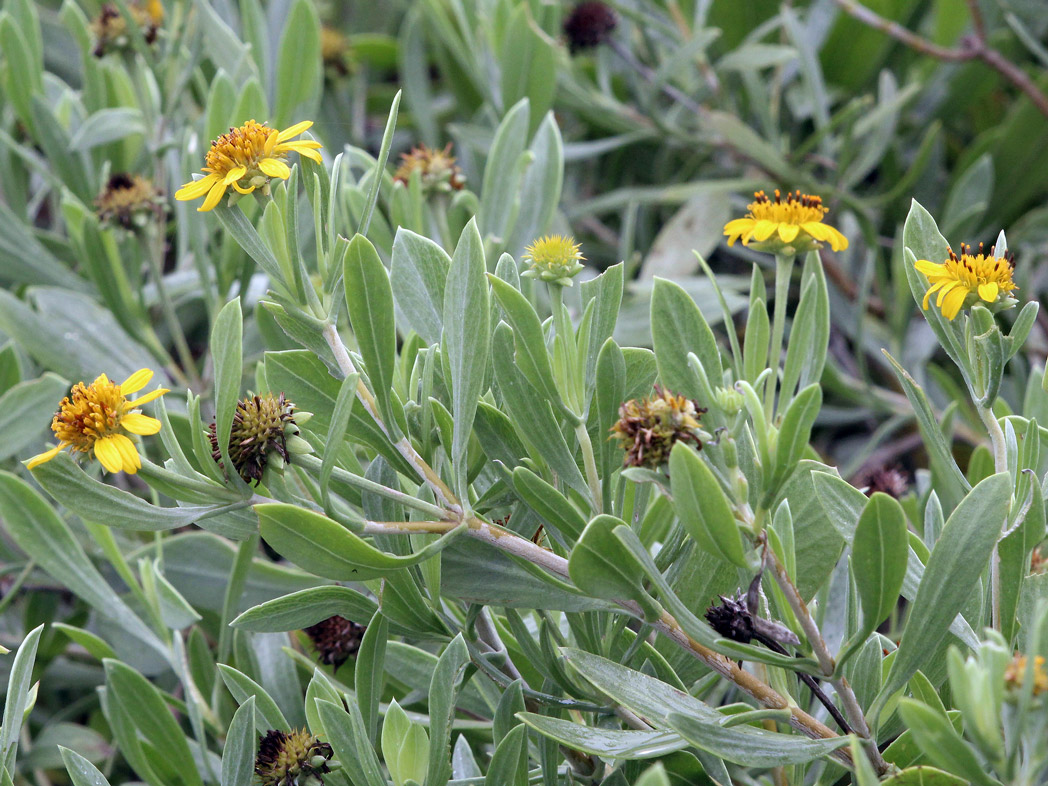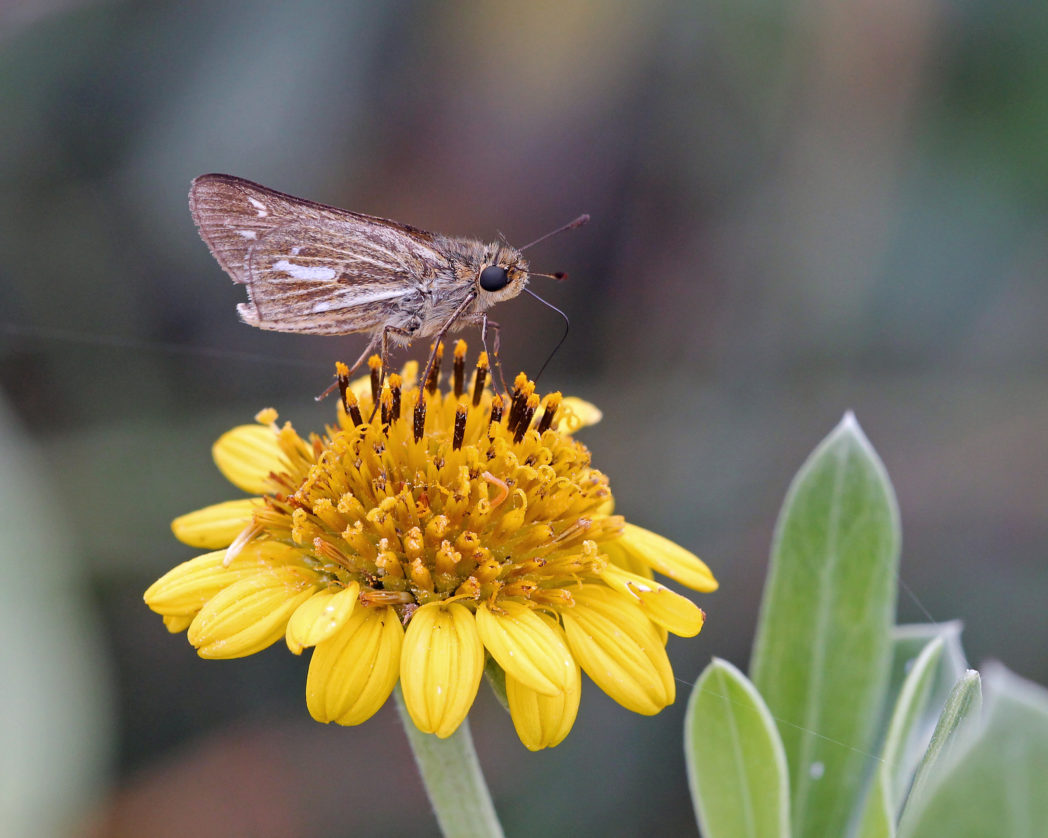Bushy seaside oxeye
Pictured above: Bushy sea oxeye (Borrichia frutescens) by Mary Keim. Click on terms for botanical definitions. View post as a PDF.
Bushy seaside oxeye (Borrichia frutescens) is a perennial shrub with attractive daisy-like blooms. It is known by many common names, including Sea-oxeye daisy, Sea marigold, Beach carnation, Seaside tansy, and Silver sea-oxeye. It occurs naturally in coastal strands, mangroves, beach dunes, salt marshes, and tidal flats. The flowers are attractive to a variety of pollinators, including Gulf fritillary, Southern white, and Orange sulphur butterflies. The seeds provide food for birds and other small wildlife.
Each flower is comprised of 15-30 yellow ray florets surrounding many stiff yellow-orange disk florets with conspicuous black anthers. Flowers are approximately 1 inch in diameter. Leaves are oval to lanceolate, grayish green, and pubescent, giving the foliage a silvery sheen. Margins are entire but may be toothed toward the base. The fruit is a dark-colored cypsela and contains a single seed.
The genus name Borrichia is named for the Danish scientist Ole Borch (1626–1690). The species epithet frutescens is Latin for “to become bushy” and refers to the plant’s shrublike growth habit.
Family: Asteraceae (Aster, composite or daisy family)
Native range: All peninsular coastal counties from Duval to Taylor, as well as Wakulla, Franklin, Bay and Santa Rosa
To see where natural populations of Bushy seaside oxeye have been vouchered, visit www.florida.plantatlas.usf.edu.
Lifespan: Perennial
Soil: Moist to wet soils, can tolerate occasional inundation
Exposure: Full sun to minimal shade
Growth habit: 2–4’+ tall
Propagation: Seeds, division
Florida regions of landscape suitability: North, Central, South (Coastal)
Garden tips: Bushy seaside oxeye is highly salt tolerant. It can tolerate drought for short periods and can withstand occasional saltwater inundation. It is excellent for coastal restorations and landscapes. It works well as a border planting, in a mixed wildflower garden, and along retention pond edges. The plant is rhizomatous and can form colonies that may persist for many years.
Bushy seaside oxeye plants are often available from nurseries that specialize in Florida native plants. Visit www.plantrealflorida.org to find a nursery in your area.
Learn more about Bushy seaside oxeye from the Florida Native Plant Society and the Institute for Regional Conservation.


